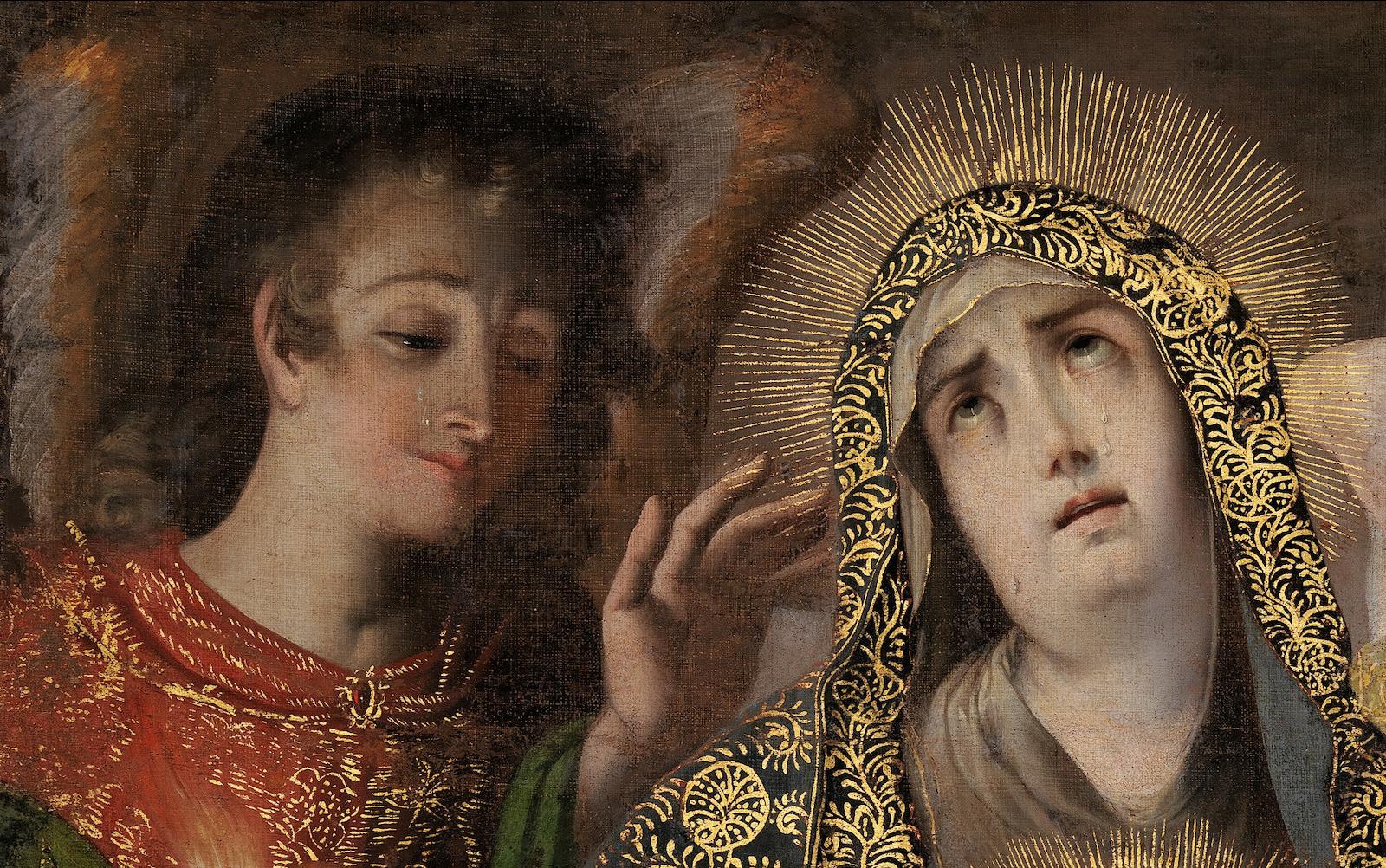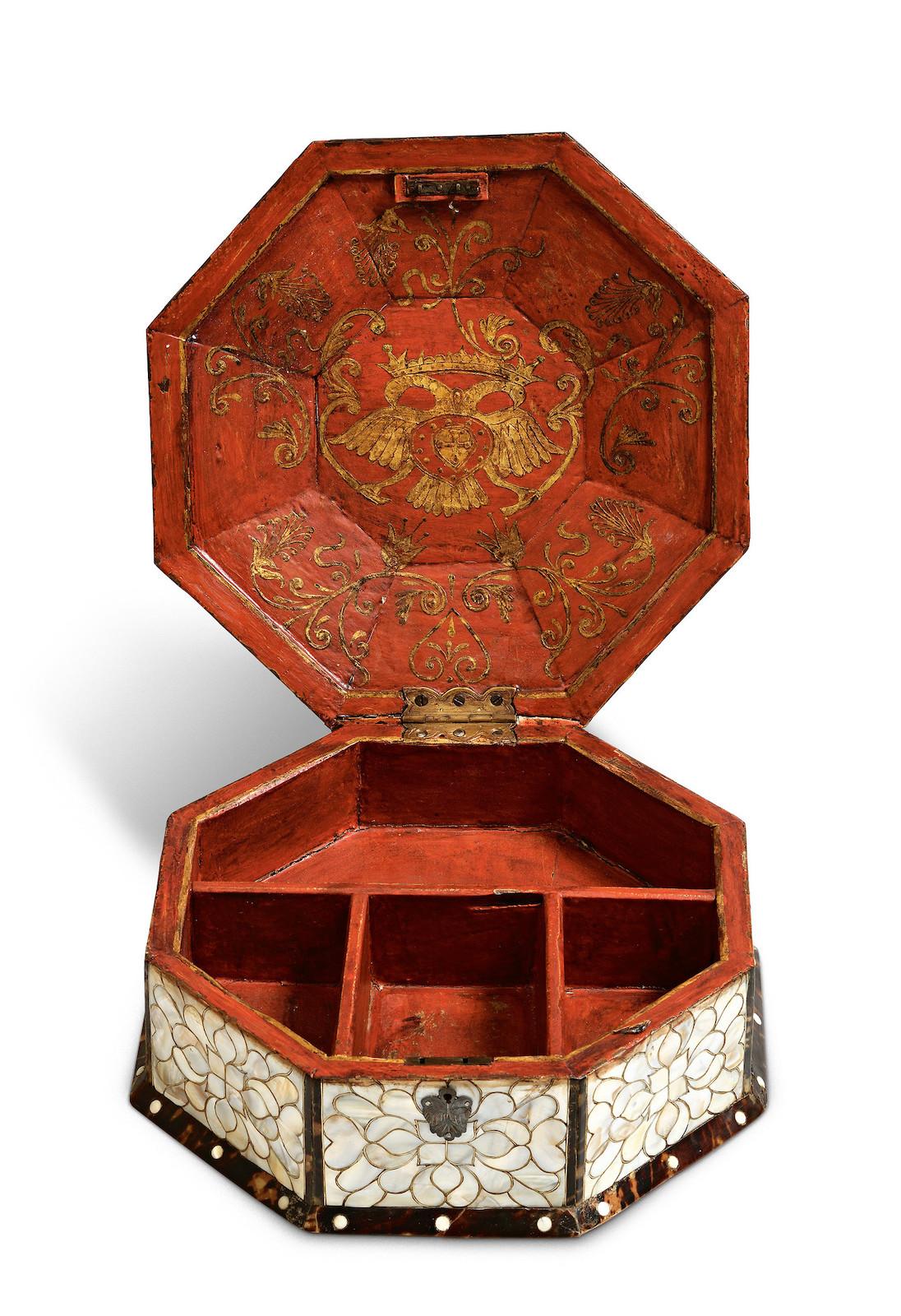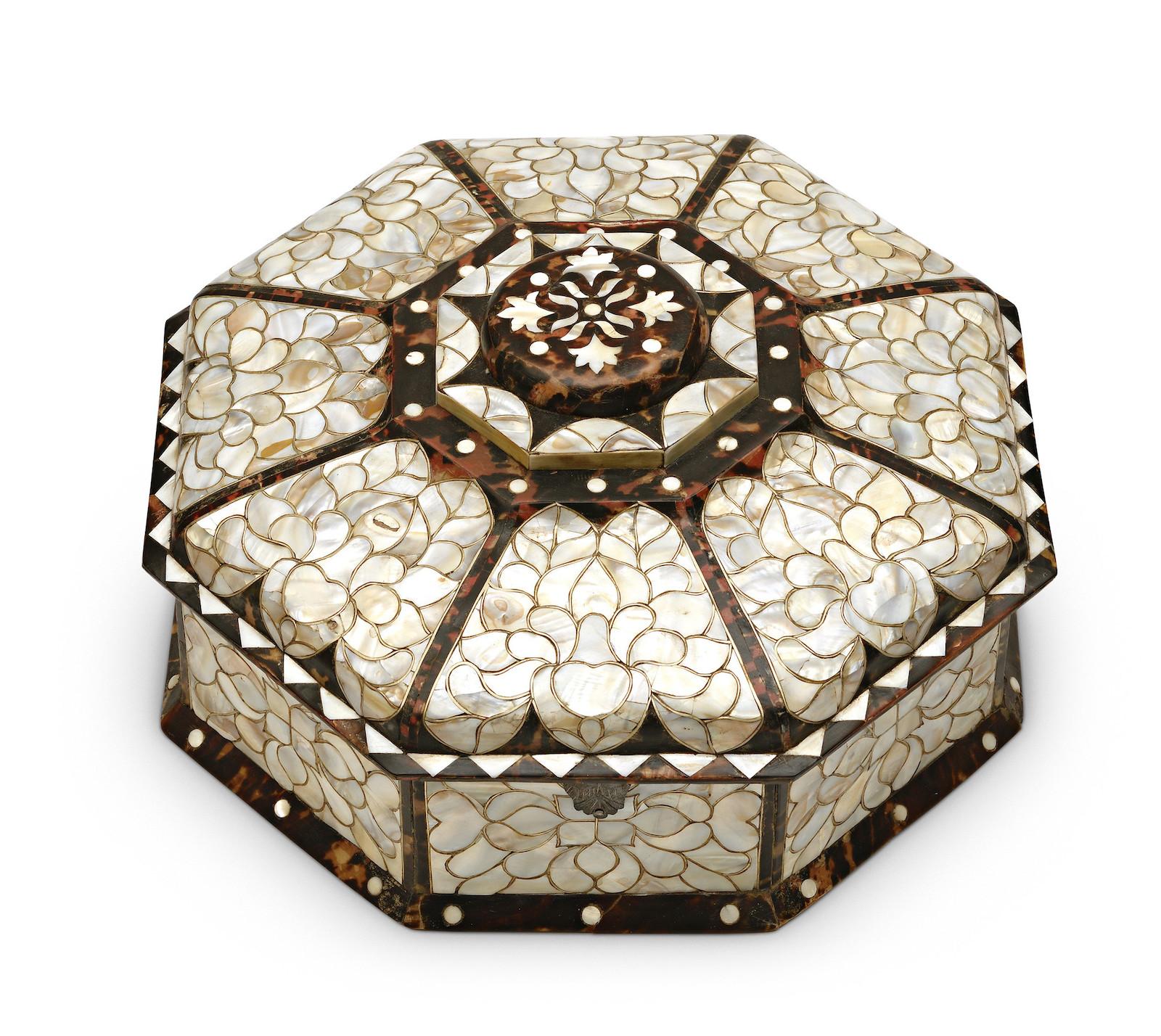The book begins with a fascinating section that doubles as a focused study of an eighteenth-century Sewing or Jewelry Box and a broad preview of the exhibition's ethos.
Written by the show’s curator and museum Department Head of Latin American Art Ilona Katzew, these introductory pages explain that the origins of this box and others like it have long been considered “slippery to categorize.”
Though its inlaid shell and red interior suggest the item is a product of Asain—specifically, Chinese—craftsmanship, items like this were exceedingly popular across Viceregal Latin America, particularly within the wealthy circles of Lima and Mexico City.































